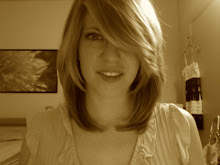Page design defined by Kimball/Hawkins is "the process of placing design objects such as text, headings, and images consistently and effectively on the page, taking into account the actual visual field, the characteristics of the design objects, and the relationships implied among them by the principles of design."
I think it’s important to realize that negative space is also important when considering page design. The design needs to be balanced. This doesn’t mean that is needs to be symmetrical. In fact symmetry might actually be somewhat boring to the viewer.
My design is asymmetrical, but still balanced. The picture takes up 2/3 of the space of the CD, more or less. The text balances out the picture in the other 1/3 of the image. It doesn’t take up as much space as the picture does, but it doesn’t need to. There needs to be more negative space on that side of the image, while still tying in the positive space for balance.
This also works with the hierarchy because the eyes first go to the most prominent thing on the page, being the picture, and end with the words. The picture is what draws the viewer’s eyes to look at the design. The viewer’s looks at the girl, then the swirl on her jacket and end up at the text. This is important, because there is an attention getter, which eventually helps deliver the message that is the text.
The f then connects the text back to the image, so that there is a consistent rotation of the viewer’s eyes. This is achieved by the unity of the arches of the f and the face above. This also adds the meaning on the word after, because of its continuality. The viewer’s eyes continue to connect the image with the text while the word after is also continuous.
Subscribe to:
Post Comments (Atom)

No comments:
Post a Comment